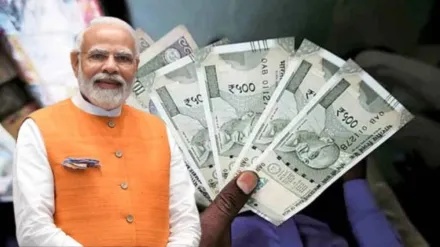
Government’s Approval of 8th Pay Commission
The Indian government has finally approved the 8th Pay Commission, bringing significant relief to over 1.2 crore central government employees and retirees. This decision, announced on January 16, marks the culmination of years of anticipation for a comprehensive review of salary structures and pension benefits. Union Minister Ashwini Vaishnaw confirmed the Union Cabinet’s nod to the pay panel, emphasizing Prime Minister Narendra Modi’s commitment to improving the financial conditions of public sector workers. The initiative is part of a broader effort to address inflationary pressures and ensure fair compensation for government employees, who have been awaiting this update since the 7th Pay Commission’s 2016 implementation.
Key Aspects of the Pay Revision
The 8th Pay Commission will now focus on recalibrating the pay matrix, with a particular emphasis on the fitment factor—a critical multiplier that determines salary and pension calculations. While the exact fitment factor remains undisclosed, industry experts predict it could range between 1.92 and 2.86, based on recent reports and union demands. The panel, set to operate for 11 months, will also evaluate additional factors such as allowances, job roles, and regional cost-of-living variations. This approach aims to create a more equitable system that balances the needs of employees with fiscal constraints. The previous 7th Pay Commission, which introduced a fitment factor of 2.57, had raised the minimum basic pay to Rs 18,000 and pensions to Rs 9,000, but the 8th Commission is expected to build on these changes.
Fitment Factor and Its Impact
The fitment factor is central to understanding the potential scope of the salary and pension revisions. Under the 7th Pay Commission, employee unions had advocated for a higher factor of 3.68, but the government opted for 2.57, resulting in minimum salaries and pensions reaching Rs 18,000 and Rs 9,000 respectively. The 8th Pay Commission’s recommendations will determine whether these figures are adjusted further. For instance, a fitment factor of 1.92 could elevate the minimum salary to Rs 34,560, while a factor of 2.86 might push it to Rs 51,480. Similarly, pensions could rise from Rs 9,000 to Rs 17,280 or even Rs 25,740, depending on the final recommendations. These projections highlight the potential for substantial financial relief, though the exact figures remain subject to the panel’s assessment.
Expected Salary and Pension Hikes
Analysts suggest that the 8th Pay Commission’s recommendations could significantly enhance the financial security of central government employees and retirees. The proposed fitment factors, if implemented, would align salaries and pensions with contemporary economic realities, ensuring that public sector workers are adequately compensated for their service. The National Council of Joint Consultative Machinery (NC-JCM) has expressed expectations for a fitment factor of at least 2.86, which would translate to a minimum salary of Rs 51,480 and pensions of Rs 25,740. However, the government’s final decision will depend on balancing these demands with fiscal responsibilities. The panel’s work will also consider the broader economic context, including inflation rates and public expenditure constraints, to ensure sustainable revisions.
Conclusion and Future Outlook
While the 8th Pay Commission’s exact recommendations remain pending, the approval of the panel signals a major step toward addressing long-standing concerns about salary stagnation and pension adequacy. The fitment factor, a key determinant of the revisions, will be the focus of the panel’s deliberations. Ultimately, the government’s acceptance of the final recommendations will dictate the extent of the financial uplift for central government employees and retirees. As the panel works toward its 11-month deadline, stakeholders across the public sector will be closely monitoring developments, anticipating a decision that could reshape the financial landscape for millions of workers.



